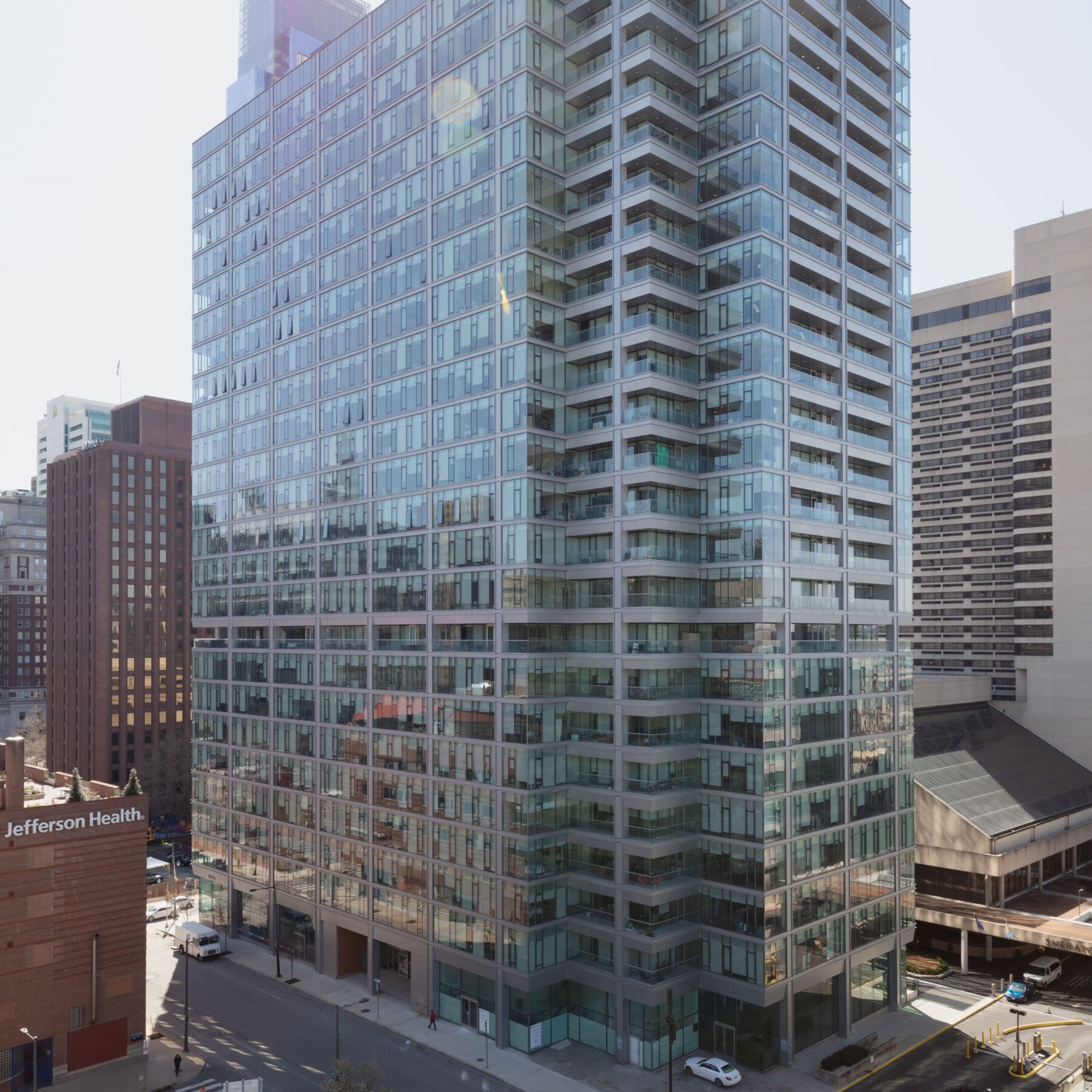Gensler leverages technology to streamline project process
These tools are helping builders focus their efforts where it matters

A rendering shows 1 St Clair West in Toronto – a current Gensler project. Due to Toronto zoning requirements some offices will remain. – Gensler
Digital tools are helping the industry not only save time and money – they are enabling teams to come up with even better building solutions.
Duanne Render, a senior associate and design manager at global design and architecture firm Gensler, has been using data crunching tools to great success. He was part of a team that developed a tool capable of identifying vacant office buildings that have a high likelihood of being successfully converted into housing. What normally takes weeks can be done in minutes.
While it started as an effort to identify suitable buildings in Calgary, where office vacancy rates have reached as high as 32 per cent, the tool has since expanded and Gensler’s team continues to make improvements.
“We’ve made various advancements in terms of accuracy and fine tuning based on the data we’ve got from locations in North America,” said Render. “ We have analyzed around 500 properties in different cities from the west coast, east coast and central areas. We are even looking at European and UK properties.”
Failing fast
Render said the tool’s success in Calgary has spurred a lot of interest in cities who want to do something similar to address office vacancies.
“Because of all the work we have been doing with cities and developers to look at properties and portfolios and assist them, we have all this data and information that has assisted us in fine-tuning how the tool works and it is getting more accurate over time,” he said.
Render noted that Gensler tells its clients that the tool is not a silver bullet, it just gives a good indication of whether or not something is worth looking into further and if there is a high likelihood of a building succeeding as a conversion.
Render explained the typical process for identifying suitable projects often takes months. It involves a developer working with an architect on a feasibility study that investigates the floor plan, layouts, essentially conducts a conceptual design phase that would then go to a cost consultant. Then it would be determined if it’s financially viable and a decision is made to proceed or not.
“What this process does is it helps us fail fast. If we get raw data we can give you a good indication of if it is likely to succeed or not. Let’s say you are looking at ten properties and want to get it down to the two best ones for development, this gives an opportunity to put a better product out there because energy can be focused into the right places.”
Duanne Render
Addressing the housing crisis
Digital tools like this can be particularly useful when applied to problems like housing.
“If you look at the housing crisis you can break it down into a couple of different challenges,” said Render. “One is the amount of housing we need to provide in a period. To build ground-up residential condos or rental is going to take significantly longer than converting an existing office building. The second thing is, if you convert in downtown areas, you’re also looking at improving the quality of cities by adding vibrancy, activity and creating that 24-hour space. By converting, you assist in doing that.”
He added that not only can you get to market fast, you can utilize office building characteristics that are less common in the residential sector.
“Floor heights are generally higher in offices, which gives you the opportunity to get natural light deeper and in some cases provide larger, better quality units,” he said.
Encouraging development
Render notes that despite the benefits, many cities have room for improvement when it comes to incentivizing this type of work. Gensler offered examples of how some progressive cities are tackling it:
- The city of Calgary has made $100 million available to assist property owners to convert offices to residential through a grant funding mechanism that made $75/sf available to eligible projects. This scheme is set to increase the downtown population by 23 per cent, increasing the tax base and injecting new life into the city, improving activity, vibrancy, and safety.
- The city of Chicago is focusing its efforts on the LaSalle Street corridor making state and federal tax credits and Cook County Tax incentives available to the selected properties. Further financial assistance may be available through Tax Increment Finance for projects that meet specific criteria such as a minimum of 30 per cent affordable housing.
- The city of Portland has also started looking into this concept and are considering a broad incentive package which may include, among others, exemption of system development charges (SDC’s) within a centralized geographic boundary, property tax exemption for seismic upgrade costs, fast-tracking tenant improvement permitting, and expanding a floor area ratio (FAR) density bonus for certain projects where it would be of value.
- Following a task force report, New York mayor Eric Adams announced his plans to make it easier to convert offices to residential use. The report focuses on relaxing planning and zoning regulations making it easier for conversions to take place.

Reducing friction for better solutions
The conversion tool isn’t the only one Gensler has developed. They have found the method is applicable in a variety of situations.
“It’s about removing friction to make processes easier in order to allow it to happen faster and with more accuracy,” said Render. “It’s so we can cut out a lot of the back and forth and the uncertainty.”
Gensler developed gblox and gfloorz to carry out test fits with real-time participation and feedback from clients. This is done in a simulated, data-rich environment where teams can envision, implement, and evaluate the implications of design decisions instantly.
“You understand what the developable area is – the area you can fit on a site within the zoning parameters,” said Render. “That generally needs to go to clients and get comments and go through cost consultants and more. What we did with gblox is automate that process to a large degree. You enter your parameters and then there is another level of customization.”
For example, if a client needs to hit a certain metric to achieve a project’s financial goals, that can be put into the toll and a dashboard will show how close or far certain approaches are from it.
“That gave us the opportunity to get to a solution in a few days with some live sessions,” said Render. “I also believe it gave us the opportunity to come up with a much better product. You can get there so much faster and give a much better quality design, not just for the client but for the urban environment and the users.”
Needing answers quickly
Render believes data crunching tools like these are just one part of how construction is changing to an accelerating world.
“If you look at society generally, people are needing answers quickly,” he said. “That in itself almost is a driver to develop tools like this. Everything is moving faster and faster and everybody needs to keep up with the pace at which things are happening. In some ways, construction is being forced to advance and I think it’s going to accelerate due to external factors like sustainability”
Render added that various levels of government are implementing more stringent sustainability requirements and have carbon-neutral commitments.
“I think those external factors will force the industry to advance,” he said. “If you look at conventional construction, does this mean we need to do more modular construction, mass timber construction and other things in order to deal with sustainability? Does that become more commonplace? From my perspective, yes, it has to.”
